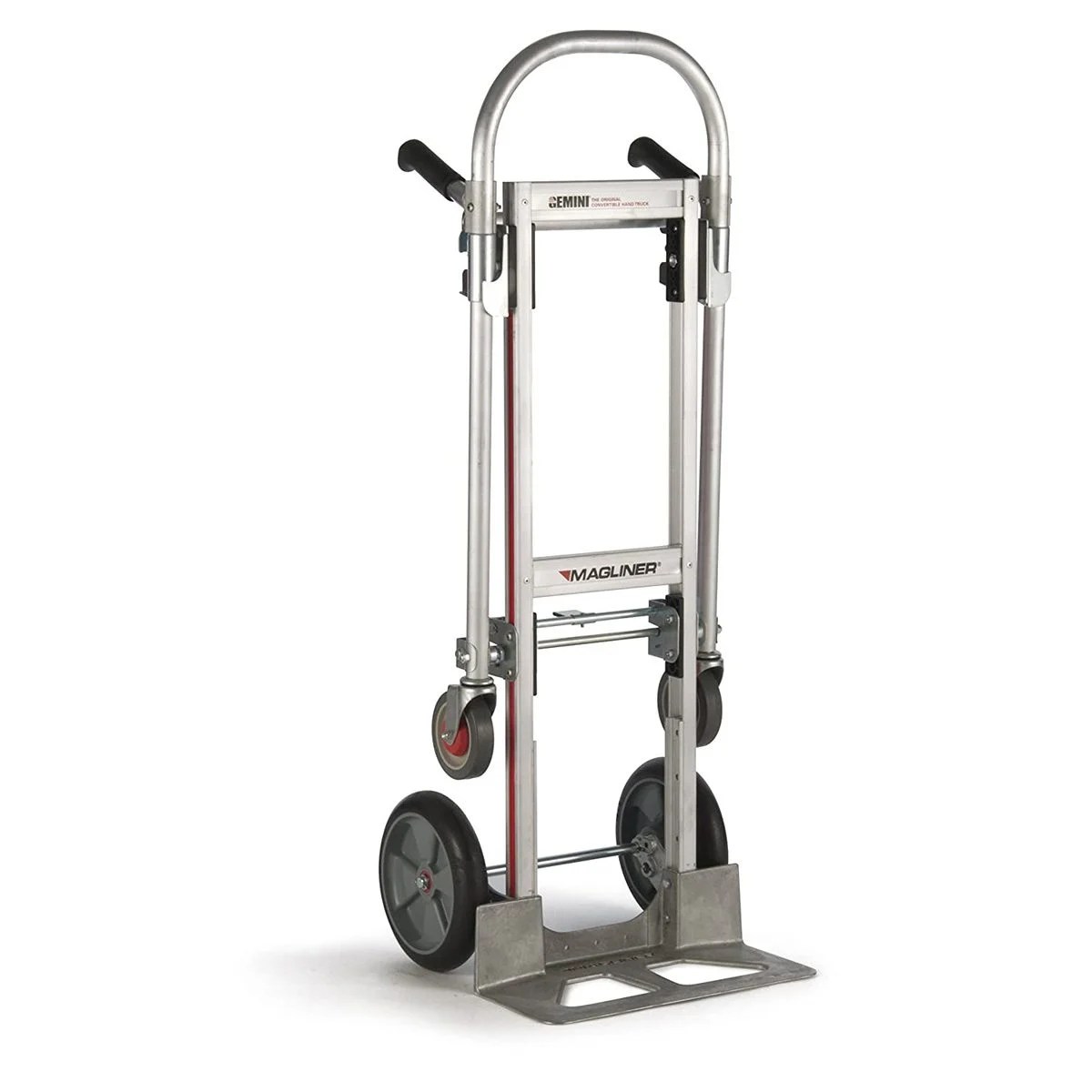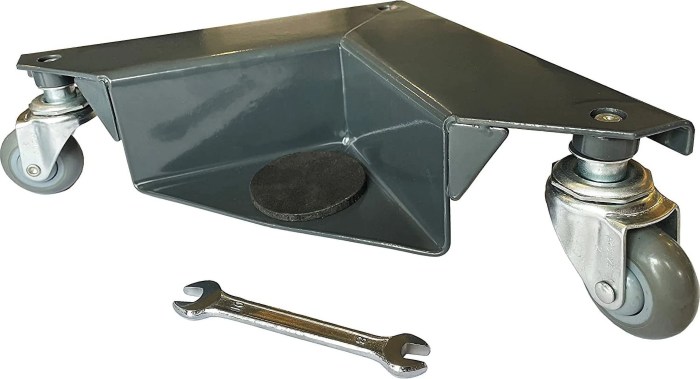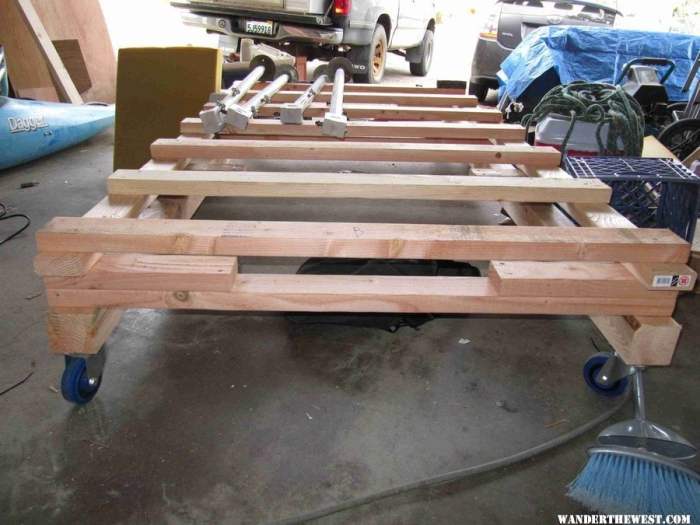Furniture dolly plans offer a fantastic way to tackle furniture moving projects with ease. Whether you’re rearranging your living room or tackling a full-scale move, building your own dolly provides a cost-effective and customizable solution. This guide will walk you through the process, from selecting materials to assembling your own sturdy furniture mover.
You’ll learn about the different types of dollies, the tools and materials you’ll need, and the steps involved in building a basic dolly. We’ll also cover safety considerations, customization tips, and alternative moving methods. Let’s get started!
Introduction to Furniture Dollies

Furniture dollies are wheeled platforms designed to make moving heavy objects, like furniture, easier. They essentially transform a heavy, cumbersome piece into a rolling object, allowing you to maneuver it around your home or workplace with minimal effort.
Furniture dollies come in a variety of shapes and sizes, each designed for specific tasks. They are a valuable tool for anyone who needs to move furniture, whether it’s for a home renovation, office relocation, or simply rearranging furniture in a room.
Types of Furniture Dollies
Furniture dollies come in various types, each with its own advantages and disadvantages.
- Platform dollies are the most common type. They feature a flat platform with wheels, suitable for moving a wide range of furniture. They are often made of metal or wood and come in various sizes.
- Stair-climbing dollies are specifically designed to navigate stairs. They have a mechanism that allows them to climb stairs without requiring much effort. These are ideal for moving furniture up or down stairs, saving you from the strain of carrying heavy objects.
- Furniture sliders are not technically dollies, but they are a useful alternative for moving furniture short distances. They are typically made of plastic or metal and are placed under the legs of furniture to reduce friction. These are particularly helpful for moving furniture across carpeted surfaces.
- Specialty dollies are designed for specific tasks, such as moving appliances, pianos, or other heavy equipment. These dollies may have specialized features like straps, harnesses, or extra-large platforms.
Benefits of Using Furniture Dollies
Using furniture dollies offers several advantages over traditional methods of moving furniture.
- Reduced strain and risk of injury: Dollies take the weight off your back and arms, preventing injuries that can occur when lifting and carrying heavy objects.
- Increased efficiency: Furniture dollies make moving furniture significantly faster and easier, allowing you to complete tasks more quickly and with less effort.
- Reduced damage to furniture and floors: Dollies prevent scratching and damage to furniture and floors, which can occur when dragging or sliding heavy objects.
- Increased maneuverability: Dollies allow you to move furniture in tight spaces and around corners with ease, making it possible to access areas that would be difficult or impossible to reach otherwise.
Materials and Tools for Building a Furniture Dolly
Building a furniture dolly is a straightforward project that requires readily available materials and basic woodworking tools. The right tools and materials ensure a sturdy and functional dolly that can handle your furniture moving needs.
Materials
The materials needed for building a furniture dolly depend on the size and weight of the furniture you plan to move. Here’s a list of common materials:
- Wood: Plywood, pine, or hardwood are suitable options. Choose a thickness that can support the weight of the furniture. For example, 3/4-inch plywood is a common choice for furniture dollies.
- Wheels: Choose wheels that are appropriate for the weight and surface you’ll be moving the dolly on. Heavy-duty casters with swivel capabilities are ideal for navigating tight spaces and uneven surfaces.
- Fasteners: Wood screws, bolts, and nuts are essential for assembling the dolly. Choose screws that are long enough to secure the wood pieces firmly.
- Optional: You can add features like handles, bumpers, or a platform for extra stability and convenience.
Tools
The following tools are essential for building a furniture dolly:
- Saw: A circular saw, jigsaw, or handsaw is necessary for cutting the wood to size.
- Drill: A cordless drill with a variety of drill bits is essential for creating pilot holes and attaching the wheels.
- Measuring Tape: Accurate measurements are crucial for ensuring the dolly fits the furniture and is structurally sound.
- Level: A level helps ensure the dolly is balanced and stable.
- Screwdriver: A Phillips head screwdriver is essential for driving screws.
- Safety Gear: Always wear safety glasses, gloves, and hearing protection when working with power tools.
Wheels
The choice of wheels is crucial for the functionality and ease of use of your furniture dolly. Here are some common types of wheels and their suitability:
- Casters: These are swivel wheels with a small diameter, making them ideal for maneuvering in tight spaces. They are commonly used on furniture dollies due to their maneuverability.
- Rigid Wheels: These wheels are fixed in a single direction and are typically larger in diameter than casters. They are suitable for moving heavy loads over smooth surfaces.
- Pneumatic Wheels: These wheels have a rubber tire filled with air, providing a smooth ride and cushioning against bumps and uneven surfaces. They are suitable for moving heavy loads over rough terrain.
- Tread: The tread on the wheels can also affect their suitability. Rubber treads provide good grip on various surfaces, while hard plastic treads are suitable for smooth surfaces.
Furniture Dolly Plans and Designs

Building a furniture dolly is a simple DIY project that can save you a lot of backache when moving heavy items. You can create a sturdy and reliable dolly using readily available materials and basic tools. This section provides step-by-step instructions and design variations for building furniture dollies that suit your needs.
Basic Furniture Dolly Construction
This section describes the construction of a basic furniture dolly. It involves assembling a simple platform with wheels attached to the bottom. This type of dolly is suitable for moving furniture with moderate weight and size.
- Materials: You will need plywood or a similar sturdy material for the platform, four caster wheels, screws, wood glue, and a measuring tape. You might also need a drill, a saw, and a screwdriver.
- Steps:
- Cut the plywood: Measure and cut the plywood to the desired size for the platform. Ensure the platform is large enough to support the furniture you intend to move.
- Attach the wheels: Mark the positions for the caster wheels on the underside of the platform. Drill pilot holes for the screws, and then attach the wheels using screws. For added strength, you can also apply wood glue to the wheel mounting points.
- Test the dolly: Once the wheels are attached, test the dolly by moving it around. Ensure that the wheels rotate smoothly and that the platform is stable.
Alternative Furniture Dolly Designs
There are many alternative designs for furniture dollies. Here are a few examples:
- Heavy-duty furniture dolly: This type of dolly can handle heavier loads. You can use thicker plywood for the platform and larger, more robust caster wheels. You might also consider adding a reinforcing frame to the platform for extra strength.
- Adjustable furniture dolly: This design allows you to adjust the height of the platform. You can use adjustable legs or a system of slots and pins to change the height of the platform, making it suitable for different types of furniture.
- Multi-purpose furniture dolly: This design can be used for moving different types of items. You can add features like a detachable handle or a platform that can be folded for storage.
Safety Considerations for Building and Using Furniture Dollies

Building and using furniture dollies can be a convenient way to move heavy objects, but it’s crucial to prioritize safety throughout the process. Failing to do so can lead to injuries or damage to property.
Safety Considerations When Building a Furniture Dolly
Building a furniture dolly involves working with tools and materials that can pose potential risks if not handled correctly. Here are some essential safety considerations:
- Use appropriate safety gear. Wear safety glasses to protect your eyes from flying debris, work gloves to prevent cuts and blisters, and a dust mask to avoid inhaling sawdust.
- Handle power tools with care. Always use power tools according to the manufacturer’s instructions and wear appropriate safety gear. Be sure to disconnect the power source before making any adjustments or repairs.
- Use caution when working with wood. Wood can splinter, so wear gloves and be careful when handling it. Always use sharp tools to prevent unnecessary force and the risk of splinters.
- Avoid using damaged tools. Inspect your tools for damage before use. Replace or repair damaged tools immediately to prevent accidents.
- Keep your work area clean and organized. A cluttered workspace can lead to tripping hazards and accidents. Clean up any debris or tools you are not using.
Safety Considerations When Using a Furniture Dolly
Using a furniture dolly can be a safe and efficient way to move heavy objects, but it’s important to use it correctly to prevent accidents.
- Inspect the dolly before use. Make sure the wheels are in good condition and the frame is sturdy. If you notice any damage, do not use the dolly.
- Choose the right dolly for the job. Select a dolly that is rated for the weight of the object you are moving. Using a dolly that is too small or not strong enough can lead to accidents.
- Position the dolly correctly. Place the dolly directly under the object you are moving and make sure the wheels are aligned with the direction you want to move.
- Lift the object onto the dolly carefully. Use proper lifting techniques to avoid injury. Get help from others if the object is too heavy for you to lift alone.
- Move the dolly slowly and carefully. Avoid sudden movements or turns that could cause the dolly to tip over.
- Be aware of your surroundings. Pay attention to obstacles in your path and make sure there is enough space to move the dolly safely.
- Use a spotter if necessary. If you are moving a large or heavy object, have someone spot for you to ensure that the dolly stays balanced and does not tip over.
Load Capacity Considerations
It’s crucial to consider the load capacity of the furniture dolly you’re using. Exceeding the load capacity can lead to instability, tipping, and potential accidents.
- Check the load capacity rating. The load capacity rating is typically found on the dolly’s frame or in the manufacturer’s instructions.
- Estimate the weight of the object. If you’re unsure of the weight, use a scale or estimate based on similar objects.
- Do not exceed the load capacity. If the object’s weight exceeds the dolly’s capacity, use a different dolly or get help from others to move the object.
- Distribute the weight evenly. Ensure the weight is evenly distributed on the dolly platform to prevent it from tipping over.
Proper Lifting Techniques
Proper lifting techniques are essential for preventing injuries when moving heavy objects, including furniture.
- Bend your knees and keep your back straight. This helps to distribute the weight evenly and avoid straining your back.
- Get a firm grip on the object. Use your hands to lift the object from the bottom, not from the top.
- Lift with your legs, not your back. Use your leg muscles to lift the object, keeping your back straight.
- Keep the object close to your body. This helps to maintain balance and reduce the strain on your back.
- Get help if needed. If the object is too heavy to lift alone, get help from others.
Additional Tips and Techniques: Furniture Dolly Plans
Customizing and maintaining furniture dollies can significantly enhance their functionality and lifespan. This section will explore practical tips for adapting dollies to specific needs and strategies for extending their usability. Additionally, it will provide insights into alternative methods for moving furniture when dollies are unavailable.
Customizing Furniture Dollies, Furniture dolly plans
Adapting furniture dollies to specific needs can make moving furniture easier and safer. Here are some customization tips:
- Adding Rubber or Plastic Pads: Attaching rubber or plastic pads to the top of the dolly’s platform can prevent scratches and dents on furniture surfaces. These pads can be purchased separately or cut from a sheet of rubber or plastic.
- Using Straps or Bungee Cords: Securing furniture to the dolly with straps or bungee cords ensures stability during transport, preventing the furniture from shifting or falling off. This is especially important when moving heavy or oddly shaped items.
- Adjusting Dolly Height: Some furniture dollies come with adjustable handles or platforms, allowing you to customize the height for different furniture pieces. For instance, a taller dolly might be needed for a large armoire, while a shorter one would be suitable for a coffee table.
Maintaining and Repairing Furniture Dollies
Proper maintenance is crucial for extending the lifespan of furniture dollies.
- Regular Cleaning: Clean the dolly after each use to remove dirt, debris, and grime. This will help prevent rust and corrosion, particularly on metal dollies.
- Lubricating Moving Parts: Lubricate the wheels and bearings regularly to ensure smooth operation and prevent wear and tear. Use a light oil or grease designed for metal parts.
- Checking for Damage: Inspect the dolly for any signs of damage, such as cracks, broken wheels, or loose screws. Repair or replace damaged parts promptly to avoid accidents or further damage.
Alternative Methods for Moving Furniture
While furniture dollies are often the most efficient option, alternative methods can be employed when dollies are unavailable.
- Using Furniture Slides: Furniture slides are thin, smooth pieces of plastic or metal that can be placed under furniture legs, allowing for easier sliding across the floor. This method is especially useful for moving furniture over carpets or rugs.
- Enlisting Help: Moving furniture with the help of others can distribute the weight and reduce strain on individuals. This is particularly helpful for large or heavy furniture items.
- Utilizing a Furniture Moving Blanket: Wrapping furniture in a moving blanket can protect it from scratches and dents during transport. The blanket can also provide a better grip for lifting and moving the furniture.
Ultimate Conclusion
With a little time and effort, you can build a furniture dolly that will make moving furniture a breeze. You’ll have the satisfaction of crafting your own solution, and you’ll save money in the process. So, gather your materials, follow the plans, and get ready to move your furniture with confidence!
FAQ Section
How much weight can a homemade furniture dolly hold?
The weight capacity depends on the materials you use and the design. A basic dolly can handle up to 200-300 pounds, but stronger designs can handle more.
What type of wheels are best for a furniture dolly?
Consider the surface you’ll be moving on. Hard floors are best with smooth-rolling casters, while carpets benefit from wheels with a tread pattern.
Can I use a furniture dolly to move appliances?
Yes, but make sure the dolly is rated for the appliance’s weight. Use caution and consider using straps for extra security.
Building a furniture dolly is a great way to move heavy items around your workshop or home. You can even use it to move a woodworking projects bed you’ve built! Just be sure to choose sturdy materials and reinforce the corners for maximum support.
Once you’ve built your dolly, you’ll be amazed at how easy it is to move even the heaviest pieces of furniture.
